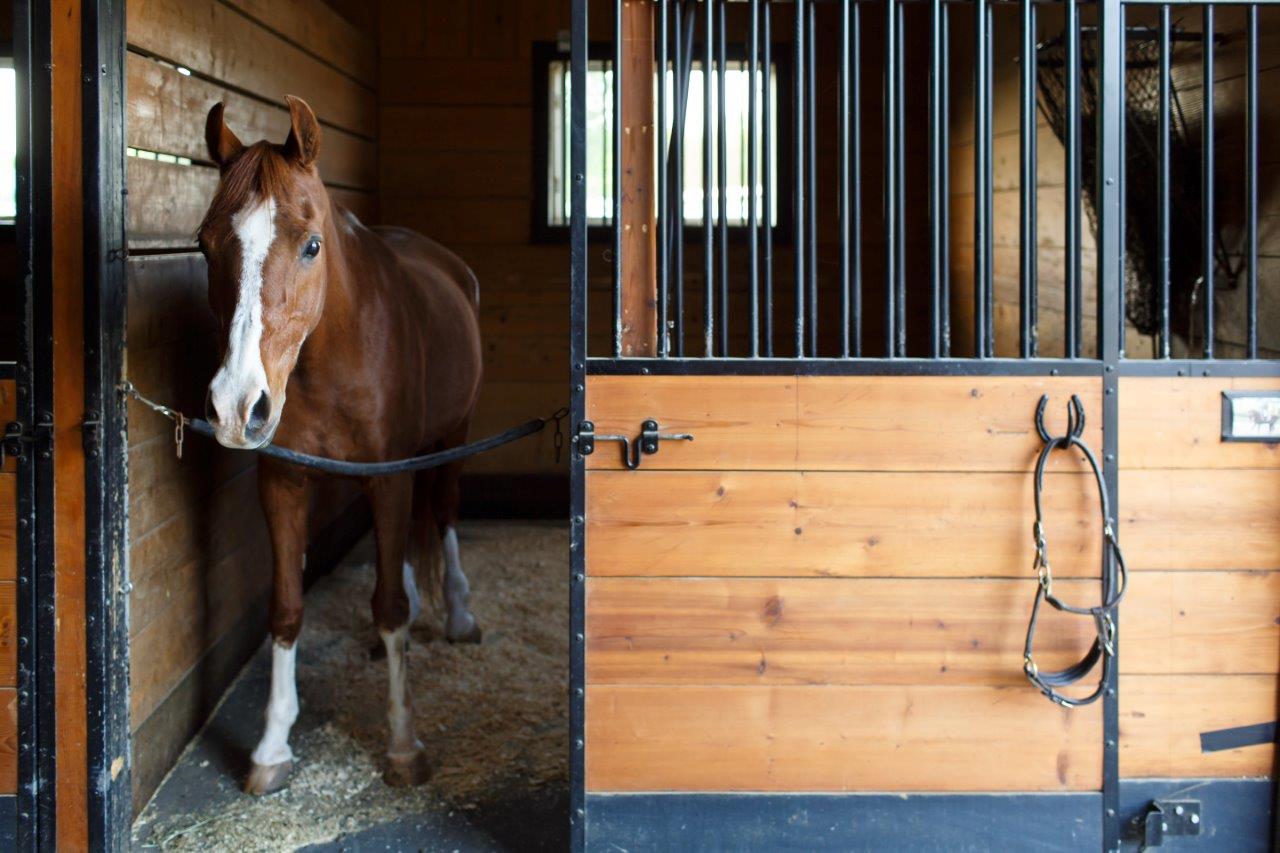Horse Feeding Problems? The Root Cause of (Most) Feeding Problems

A couple of months ago, a friend asked me about feed for her 20-something retired Jumper that was losing weight coming out of winter.
It’s not uncommon for a horse to shed a few pounds during the transition from winter to spring, but she was concerned that he wasn’t putting them back on with pasture turnout.
When I asked what he was being fed, she said he was getting a senior feed mixed with a performance feed. Puzzled, I asked why the mix and how much of each?
She shared that he was getting 5-6 pounds of senior feed a day and about 2 pounds of the performance feed for extra calories. When I looked up the feeding directions for the senior feed, the manufacturer recommended 10-12 pounds per day for his weight.
When I shared this information with my friend, we decided to try increasing the senior to the recommended amount and dropping the performance feed. About 2 weeks after our conversation, she shared with me that the change was working and he was looking better already!
This conversation got me thinking…why do we, as horse owners, run into issues with feed? After all, the design and variety of feeds available today incorporate some of the latest and greatest nutritional research of our time. So why do we continue to struggle? What are the root causes when it comes to problems with our horse’s feed?
Reflecting back on years of questions and troubleshooting, I think I’ve been able to boil it down most cases to one of the two following*
- Feeding the incorrect product
or - Feeding the right product incorrectly
When I took a step back, I came to realize that feed can be really complicated. When you are in the industry and steeped in the subject, it seems so clear. But when you’re trying to juggle many other elements of the care, training, management, health, etc., the feed part of the puzzle can seem overwhelmingly complicated.
It may seem oversimplified, but here’s my best advice to make sure you’re feeding the right product at the right amount:
- Find a brand you like, trust and can afford. Not sure? Ask a friend or pro who have horses in similar age range or activity level as yours. Ask at your farm store. Ask your vet. Ask your farrier. Do some research on your own and find a brand you like.
- Find a product in that brand that is designed for your horse’s life stage or activity level. Each product is required by regulation to state on the tag or bag what the product is designed to do for the horse.
- Weigh your horse using a weight tape or scale if you have access to one. Here is another handy tool for measuring your horse without a scale from a previous blog post.
- Buy a hanging scale, a decent one can be purchased from a farm supply store for around $30. A person can pay much more but you really just need a scale that ‘tares’ (aka zero’s out) and has a hook to hang a bucket from.
- Using the feeding directions, calculate how many POUNDS of feed per day your horse should be fed. (Tip: Nutrena offers an easy online calculator tool on each product page at www.NutrenaWorld.com)
- Place an empty bucket on the scale. Tare it so the scale is set to 0 with the bucket. Weigh the feed to be sure you’re giving your horse the proper amount according to the directions.
- Over the next few weeks, check your horse’s body condition score and adjust within the feeding direction range until you’ve reached an ideal weight/condition.
There were many things my friend was doing correctly, such as feeding the correct feed and weighing it to ensure a consistent amount, but one missed detail was all it took to negate her efforts.
As soon as she bumped her horse to the recommended feeding rate, it all came together.
What do you find most confusing about feed?
*Assuming dentition issues, parasite load, hay quality/quantity and disease were ruled out.
